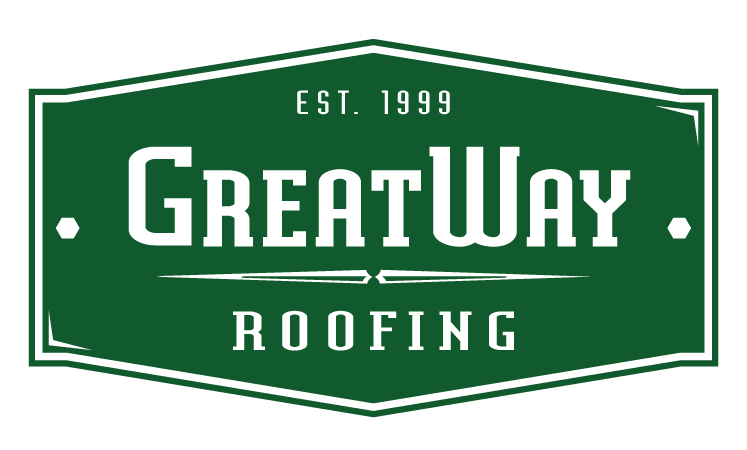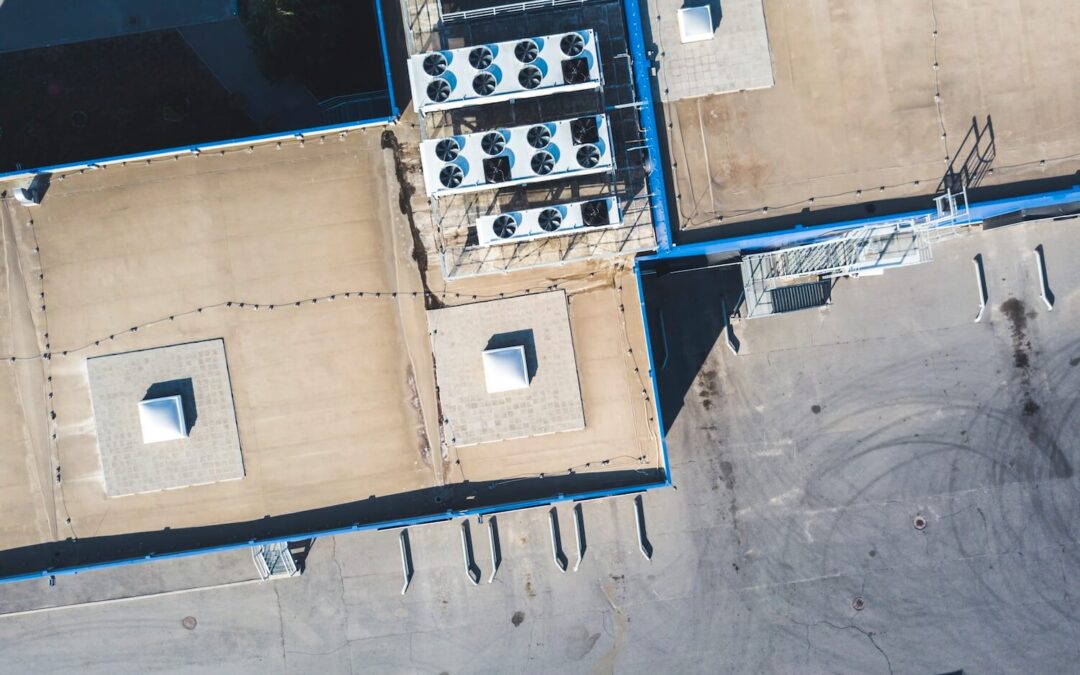One of the most impactful changes you can make to maintain your building’s energy efficiency is retrofitting your low-slope roof with a cool roof system. Whether you’re managing a commercial or residential property, a low-slope roof can often be challenging to keep cool, especially in regions with hot climates. The good news is that a cool roof system can help reduce heat absorption, lower cooling costs, extend the life of your roof, and significantly improve your building’s indoor comfort.
In this guide, we’ll explore the benefits of retrofitting your low-slope roof with a cool roof system, how these systems work, and the step-by-step process of selecting and installing the right system. Additionally, we’ll explore the environmental benefits and long-term financial savings, clarifying why a cool roof system is worth considering.
Understanding Low-Slope Roofs and Their Challenges
Before we delve into the specifics of cool roof systems, let’s first understand the nature of low-slope roofs and why they can be problematic regarding energy efficiency.
A low-slope roof is defined as any roof with a slope less than 14 degrees. These roofs are commonly seen in commercial buildings, warehouses, schools, and some residential properties. Low-slope roofs are typically easier to install and provide more usable space on top, which can benefit mechanical systems or rooftop gardens. However, the flat nature of these roofs can result in heat buildup during hot weather.
Unlike steep-slope roofs, which naturally shed water and heat, low-slope roofs absorb much heat. They have limited ability to reflect the sun’s rays, leading to increased heat retention, higher internal temperatures, and increased energy costs for cooling. Continuous exposure to UV rays and heat also causes the roofing materials to degrade faster, reducing the overall lifespan of your roof. That’s where a cool roof system comes into play.
What is a Cool Roof System?
A cool roof system is designed to reflect more sunlight and absorb less heat than standard roofing materials. This system reduces the heat transferred into the building, thus lowering the energy required to cool the interior. Cool roofs are typically made from reflective materials or coatings that reflect sunlight and absorb less infrared radiation, significantly reducing roof surface temperatures.
Cool roofs are beneficial for various building types, but they are particularly effective for low-slope roofs. Low-slope roofs are prone to absorbing heat, and by applying a cool roof system, you can combat this issue and reduce the need for excessive air conditioning. In essence, a cool roof acts as an energy-efficient upgrade, improving both the comfort of the indoor environment and the overall sustainability of the building.
Types of Cool Roofs for Low-Slope Roofs
When considering a retrofit, several cool roof options are available, each designed to address specific needs and roof conditions. The type of cool roof system that’s best for your property will depend on factors like climate, roof condition, budget, and the specific needs of your building. Below are the three primary types of cool roofs for low-slope roofs:
1. Reflective Coatings
Reflective coatings are among the most popular and cost-effective methods for retrofitting a low-slope roof with a cool roof system. These coatings can be applied directly to the existing roof and are designed to reflect the sun’s rays, reducing heat absorption. They come in various types, including elastomeric, silicone, acrylic, and urethane coatings.
- Elastomeric Coatings: These are rubber-based coatings that form a flexible membrane over the existing roof. They are highly reflective and provide excellent protection against UV radiation.
- Silicone Coatings: Known for their durability, silicone coatings are water-resistant and ideal for regions with high rainfall or areas prone to ponding water.
- Acrylic Coatings: These are less expensive but provide decent reflectivity and UV protection. They are commonly used in buildings with low to moderate exposure to heat and UV radiation.
Benefits of Reflective Coatings:
- Easy Application:Reflective coatings can be applied to most existing roof materials without needing full replacement, making them ideal for budget-conscious property owners.
- Affordable: Reflective coatings are relatively affordable compared to other cool roof systems while still providing significant energy savings.
- Minimal Disruption: The application process is relatively quick, causing minimal disruption to the building’s daily operations.
2. Reflective Membranes
Reflective membranes are pre-manufactured roofing systems designed with reflective materials built into the membrane itself. These systems are typically used for complete roof replacements but can also be used as part of a retrofit if the roof needs major repairs or an upgrade.
Some of the most common types of reflective membranes include:
- TPO (Thermoplastic Olefin): TPO is a durable, heat-reflective membrane widely used for both commercial and residential low-slope roofs. It offers high reflectivity and energy efficiency.
- PVC (Polyvinyl Chloride): PVC is another reflective membrane known for its high solar reflectance. It is often chosen for commercial buildings due to its long-term durability and UV resistance.
Benefits of Reflective Membranes:
- Durability: Reflective membranes are highly durable and resistant to UV degradation, making them an excellent long-term solution for low-slope roofs.
- Energy Efficiency: With high solar reflectance, reflective membranes significantly reduce the heat absorbed by the roof, lowering cooling costs.
- Ease of Maintenance: These systems are relatively easy to maintain compared to traditional roofing systems, requiring only occasional cleaning and inspection.
3. Green Roofs
While not traditionally considered a “cool roof” in the standard sense, green roofs (also known as living roofs) can provide significant cooling benefits. A green roof involves planting vegetation on top of a waterproof membrane, which reduces the heat island effect, improves air quality, and helps absorb rainwater.
Green roofs are most commonly used in urban environments to reduce the heat island effect and improve environmental sustainability.
Benefits of Green Roofs:
- Natural Cooling: Plants naturally absorb and reflect sunlight, which reduces the heat absorption of the building.
- Stormwater Management: Green roofs can absorb significant amounts of rainwater, reducing runoff and decreasing the load on urban drainage systems.
- Biodiversity: They create wildlife habitat, helping promote biodiversity in urban areas.
Why Retrofit Your Low-Slope Roof with a Cool Roof System?
The benefits of retrofitting your low-slope roof with a cool roof system are numerous, both from an environmental and financial standpoint. Let’s explore why you should consider this retrofit:
1. Energy Savings
The most immediate and compelling reason to retrofit your low-slope roof with a cool roof system is the reduction in cooling costs. According to the U.S. Environmental Protection Agency (EPA), cool roofs can lower a building’s temperature by up to 50 degrees Fahrenheit, significantly reducing the load on air conditioning systems. This reduction in the need for cooling translates into lower energy bills, making cool roofs one of the most cost-effective energy-saving solutions.
Cooling can account for a large portion of energy usage for commercial buildings, particularly in hot climates. Installing a cool roof system can reduce this by up to 30%, offering substantial savings over time.
2. Extended Roof Lifespan
Cool roof systems also offer long-term benefits by extending the lifespan of your roof. High temperatures can cause roofing materials to deteriorate faster, leading to the need for costly repairs or even premature roof replacement. By reducing the heat absorbed by your low-slope roof, a cool roof system minimizes the wear and tear caused by UV rays and high temperatures, resulting in a longer-lasting roof.
3. Improved Indoor Comfort
Cool roofs help regulate indoor temperatures by reflecting more sunlight and reducing heat absorption, creating a more comfortable living or working environment. This can have a direct impact on productivity, employee satisfaction, and overall well-being in commercial settings and improved comfort for residents in homes.
4. Environmental Impact
One of the most important reasons to consider a cool roof system is its environmental benefits. By reflecting more solar radiation, cool roofs help reduce the urban heat island effect, contributing to higher city temperatures and increased air pollution. On a larger scale, cool roofs help mitigate climate change by lowering energy demand and decreasing greenhouse gas emissions associated with power production.
5. Increased Property Value
The installation of a cool roof can increase the value of your property. Energy-efficient features, including cool roofs, are highly sought after by prospective buyers and tenants. Not only do they reduce long-term operational costs, but they also provide an eco-friendly solution that appeals to environmentally conscious buyers.
The Cool Roof Retrofit Process
Now that you understand the benefits and different types of cool roof systems, it’s time to explore the retrofit process in more detail. Retrofitting your low-slope roof with a cool roof system is a multi-step process that involves careful planning and professional installation.
1. Roof Assessment
Before proceeding with any retrofit, it’s essential to have your roof professionally assessed. A roofing contractor will examine your existing roof for any damage, leaks, or signs of wear. If significant damage is found, repairs or a full commercial roof replacement may be necessary before installing a cool roof system.
2. Choosing the Right Cool Roof System
After the assessment, you’ll work with your roofing contractor to choose the most suitable cool roof system. Factors like climate, roof condition, and budget will influence this decision. The contractor will help you evaluate whether reflective coatings, membranes, or other options are best suited to your property.
3. Installation
Once you’ve selected your cool roof system, the installation process can begin. It begins with cleaning the existing roof, making any necessary repairs, and then applying the chosen system. Depending on the system’s complexity, installation may take a few days to several weeks.
4. Maintenance and Monitoring
Once the cool roof system is installed, regular maintenance is essential to ensure its effectiveness. This includes periodic cleaning, inspections for damage, and reapplication of coatings or membranes when needed. Monitoring the energy savings and internal temperature improvements can also help assess the effectiveness of the retrofit.
Conclusion
Retrofitting your low-slope roof with a cool roof system is an excellent investment that provides long-term energy savings, increased comfort, and environmental benefits. Whether you opt for reflective coatings, membranes, or even a green roof, you’ll be improving your building’s efficiency while extending the lifespan of your roof. The retrofitting process may involve initial costs, but the financial, environmental, and comfort-related benefits more than outweigh these expenses over time.
If you’re considering this retrofit, work with experienced professionals who can guide you through the process, help you choose the right system, and ensure proper installation. A cool roof system is not just a smart choice for your building—it’s a step towards a more sustainable future.

